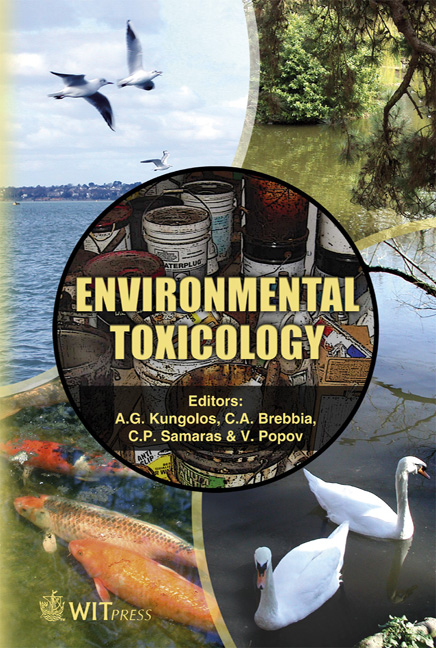Contamination Of Agricultural Soil By Arsenic Containing Irrigation Water In Bangladesh: Overview Of Status And A Proposal For Novel Biological Remediation
Price
Free (open access)
Transaction
Volume
10
Pages
10
Published
2006
Size
391 kb
Paper DOI
10.2495/ETOX060301
Copyright
WIT Press
Author(s)
S. M. A. Islam, K. Fukushi & K. Yamamoto
Abstract
Arsenic toxicity in the groundwater of Bangladesh poses a serious threat to public health. More than 35 million people are consuming arsenic-polluted groundwater there. So far, a lot of effort has been made to find safe drinking water but no suitable solution has yet been established, while continued cropping with arsenic contaminated irrigation water increases the extent of contamination in agricultural land. The objective of this paper is to review information on the arsenic concentration in the agricultural soil of Bangladesh irrigated with arsenic-contaminated water. In addition, this study overviews the literature, which focus on the biological remediation of arsenic from soil. Arsenic as high as 10 kg/ha per year is cycled through irrigated water and deposited on surface soil of Bangladesh, which results in its cumulative accumulation. It was observed to be as high as 83 mgAs/kg arsenic in the topsoil of irrigated agricultural land whereas in non-irrigated land arsenic was reported as 3-9 mgAs/kg. Considering the increasing trend of arsenic concentration in soil, it is necessary to establish some procedure for arsenic cleanup from soil. Biological cleanup could be a feasible solution for a developing country like Bangladesh. The feasibility of biological removal of arsenic from soil has been established in one study. Keywords: arsenic concentration, agricultural land soil, rice plant, biological removal of arsenic, biological gasification of arsenic, soil column.
Keywords
arsenic concentration, agricultural land soil, rice plant, biological removal of arsenic, biological gasification of arsenic, soil column.





